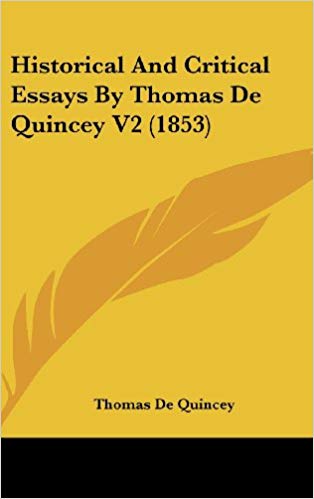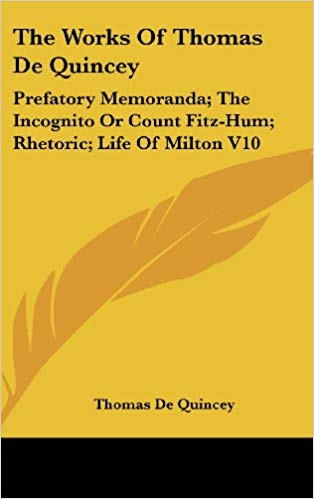Ir al contenido
Resultados de la búsqueda para: Thomas de Quincey
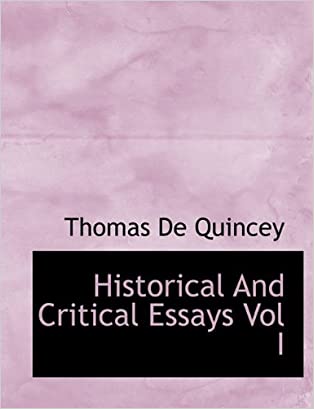

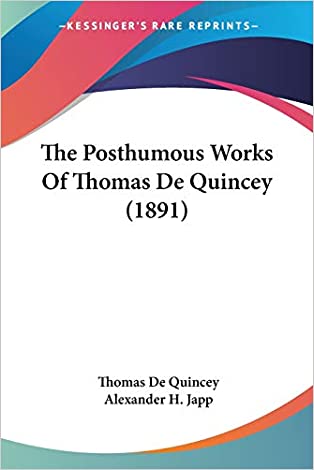

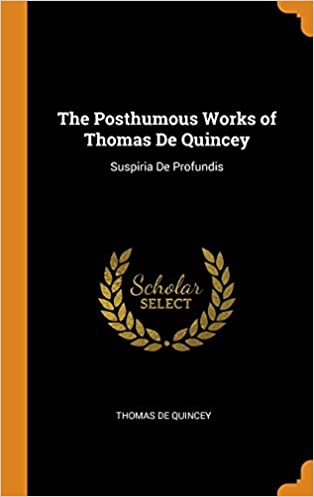 This work has been selected by scholars as being culturally important and is part of the knowledge base of civilization as we know it.This work is in the public domain in the United States of America, and possibly other nations. Within the United States, you may freely copy and distribute this work, as no entity (individual or corporate) has a copyright on the body of the work.Scholars believe, and we concur, that this work is important enough to be preserved, reproduced, and made generally available to the public. To ensure a quality reading experience, this work has been proofread and republished using a format that seamlessly blends the original graphical elements with text in an easy-to-read typeface.We appreciate your support of the preservation process, and thank you for being an important part of keeping this knowledge alive and relevant.
This work has been selected by scholars as being culturally important and is part of the knowledge base of civilization as we know it.This work is in the public domain in the United States of America, and possibly other nations. Within the United States, you may freely copy and distribute this work, as no entity (individual or corporate) has a copyright on the body of the work.Scholars believe, and we concur, that this work is important enough to be preserved, reproduced, and made generally available to the public. To ensure a quality reading experience, this work has been proofread and republished using a format that seamlessly blends the original graphical elements with text in an easy-to-read typeface.We appreciate your support of the preservation process, and thank you for being an important part of keeping this knowledge alive and relevant.
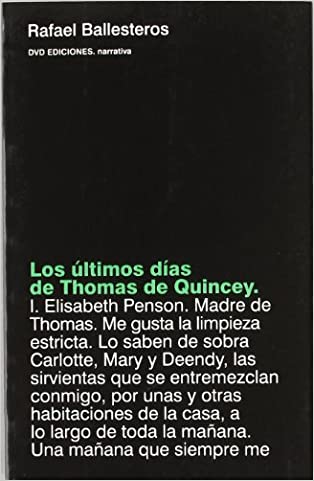

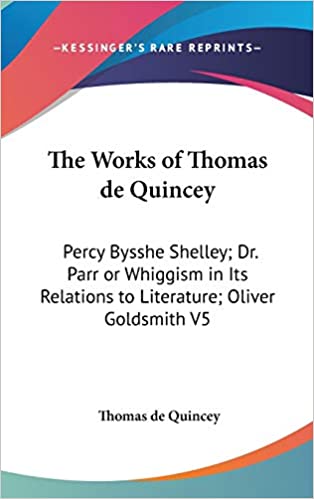

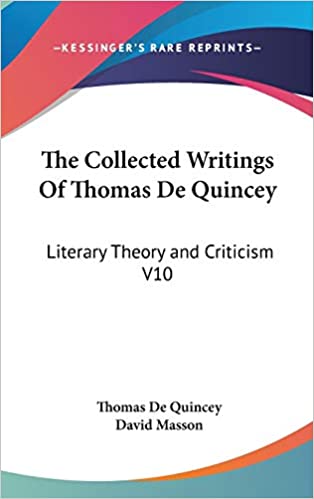



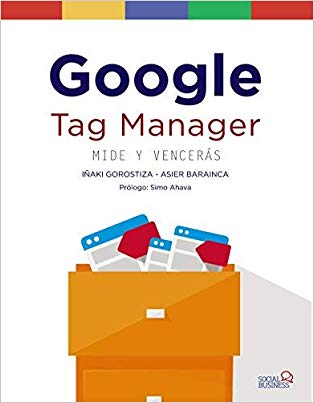 En este libro, Un comedor de opio, Baudelaire, a través del análisis de Suspiria de profundis, procura comunicar al lector el sentimiento de que De Quincey fue «no sólo uno de los espíritus más originales, más auténticamente humorísticos de la Vieja Inglaterra, sino una de las personalidades más afables y más caritativas que hayan honrado la historia de las letras». Desea justificarlo no por lo que no hizo, por lo que se le condenaba, o sea por no haber rendido servicios útiles a la humanidad, sino por lo que hizo. Baudelaire reclama para De Quincey la gratitud del hombre «realmente espiritual». Sólo por haber escrito un libro bello, y pregunta : «¿Lo Bello no es acaso tan noble como lo Verdadero ?»
En este libro, Un comedor de opio, Baudelaire, a través del análisis de Suspiria de profundis, procura comunicar al lector el sentimiento de que De Quincey fue «no sólo uno de los espíritus más originales, más auténticamente humorísticos de la Vieja Inglaterra, sino una de las personalidades más afables y más caritativas que hayan honrado la historia de las letras». Desea justificarlo no por lo que no hizo, por lo que se le condenaba, o sea por no haber rendido servicios útiles a la humanidad, sino por lo que hizo. Baudelaire reclama para De Quincey la gratitud del hombre «realmente espiritual». Sólo por haber escrito un libro bello, y pregunta : «¿Lo Bello no es acaso tan noble como lo Verdadero ?» 
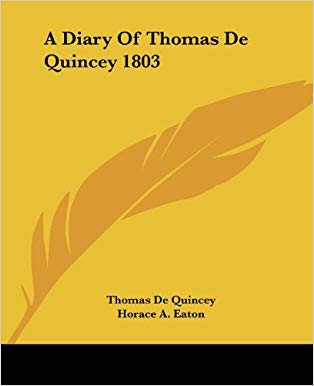



 This work has been selected by scholars as being culturally important and is part of the knowledge base of civilization as we know it.This work is in the public domain in the United States of America, and possibly other nations. Within the United States, you may freely copy and distribute this work, as no entity (individual or corporate) has a copyright on the body of the work.Scholars believe, and we concur, that this work is important enough to be preserved, reproduced, and made generally available to the public. To ensure a quality reading experience, this work has been proofread and republished using a format that seamlessly blends the original graphical elements with text in an easy-to-read typeface.We appreciate your support of the preservation process, and thank you for being an important part of keeping this knowledge alive and relevant.
This work has been selected by scholars as being culturally important and is part of the knowledge base of civilization as we know it.This work is in the public domain in the United States of America, and possibly other nations. Within the United States, you may freely copy and distribute this work, as no entity (individual or corporate) has a copyright on the body of the work.Scholars believe, and we concur, that this work is important enough to be preserved, reproduced, and made generally available to the public. To ensure a quality reading experience, this work has been proofread and republished using a format that seamlessly blends the original graphical elements with text in an easy-to-read typeface.We appreciate your support of the preservation process, and thank you for being an important part of keeping this knowledge alive and relevant.



 En este libro, Un comedor de opio, Baudelaire, a través del análisis de Suspiria de profundis, procura comunicar al lector el sentimiento de que De Quincey fue «no sólo uno de los espíritus más originales, más auténticamente humorísticos de la Vieja Inglaterra, sino una de las personalidades más afables y más caritativas que hayan honrado la historia de las letras». Desea justificarlo no por lo que no hizo, por lo que se le condenaba, o sea por no haber rendido servicios útiles a la humanidad, sino por lo que hizo. Baudelaire reclama para De Quincey la gratitud del hombre «realmente espiritual». Sólo por haber escrito un libro bello, y pregunta : «¿Lo Bello no es acaso tan noble como lo Verdadero ?»
En este libro, Un comedor de opio, Baudelaire, a través del análisis de Suspiria de profundis, procura comunicar al lector el sentimiento de que De Quincey fue «no sólo uno de los espíritus más originales, más auténticamente humorísticos de la Vieja Inglaterra, sino una de las personalidades más afables y más caritativas que hayan honrado la historia de las letras». Desea justificarlo no por lo que no hizo, por lo que se le condenaba, o sea por no haber rendido servicios útiles a la humanidad, sino por lo que hizo. Baudelaire reclama para De Quincey la gratitud del hombre «realmente espiritual». Sólo por haber escrito un libro bello, y pregunta : «¿Lo Bello no es acaso tan noble como lo Verdadero ?» 
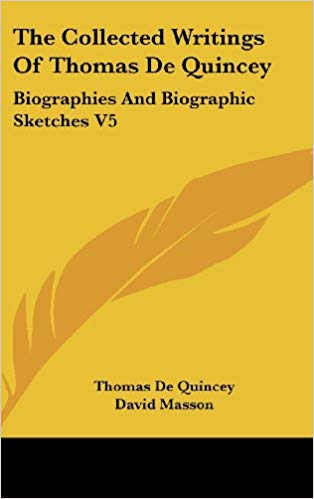
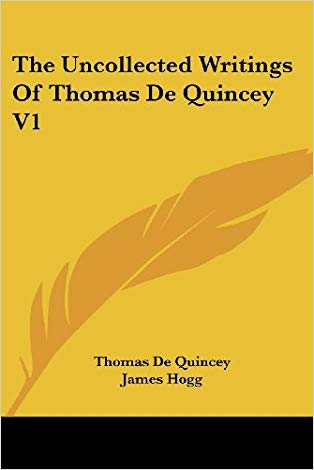
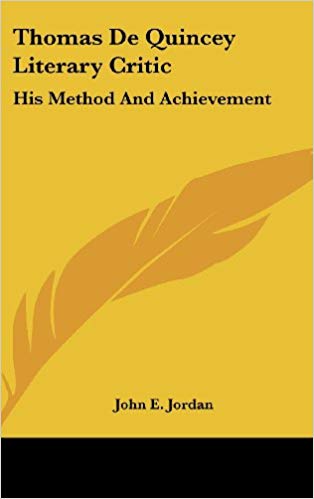
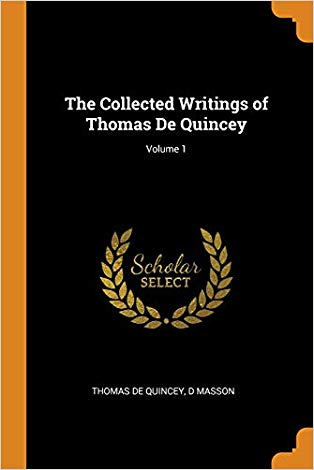 This work has been selected by scholars as being culturally important and is part of the knowledge base of civilization as we know it.This work is in the public domain in the United States of America, and possibly other nations. Within the United States, you may freely copy and distribute this work, as no entity (individual or corporate) has a copyright on the body of the work.Scholars believe, and we concur, that this work is important enough to be preserved, reproduced, and made generally available to the public. To ensure a quality reading experience, this work has been proofread and republished using a format that seamlessly blends the original graphical elements with text in an easy-to-read typeface.We appreciate your support of the preservation process, and thank you for being an important part of keeping this knowledge alive and relevant.
This work has been selected by scholars as being culturally important and is part of the knowledge base of civilization as we know it.This work is in the public domain in the United States of America, and possibly other nations. Within the United States, you may freely copy and distribute this work, as no entity (individual or corporate) has a copyright on the body of the work.Scholars believe, and we concur, that this work is important enough to be preserved, reproduced, and made generally available to the public. To ensure a quality reading experience, this work has been proofread and republished using a format that seamlessly blends the original graphical elements with text in an easy-to-read typeface.We appreciate your support of the preservation process, and thank you for being an important part of keeping this knowledge alive and relevant.